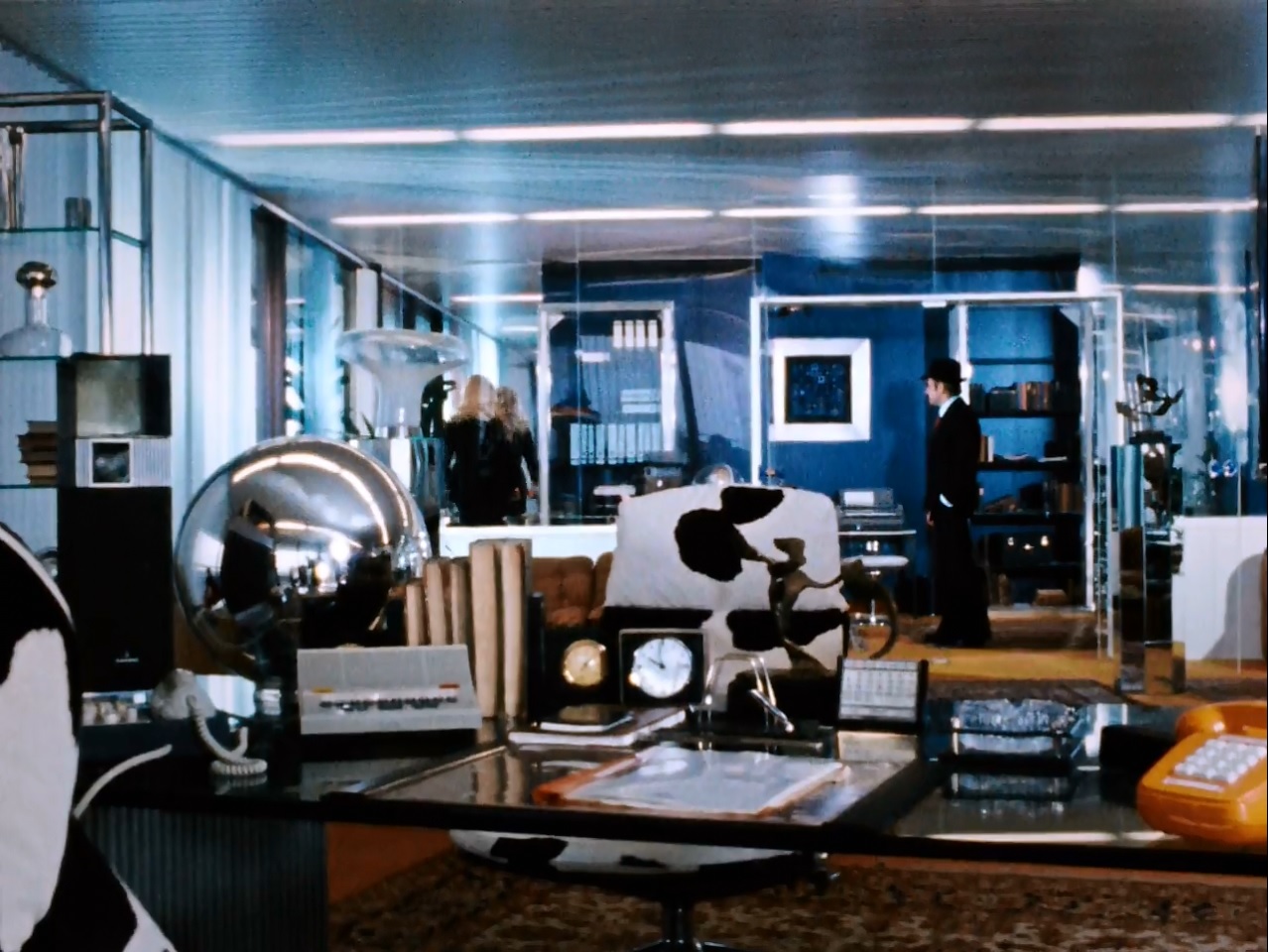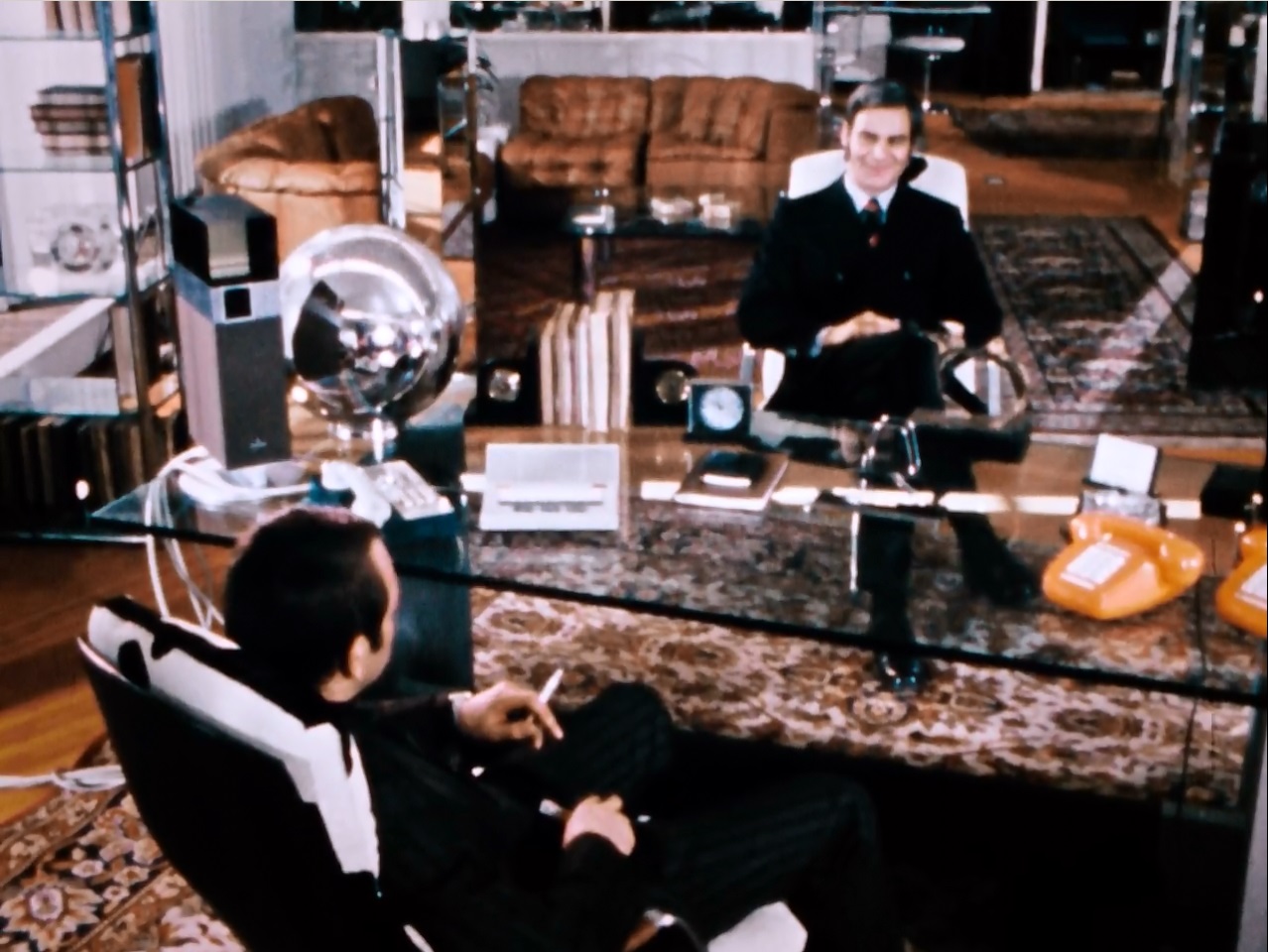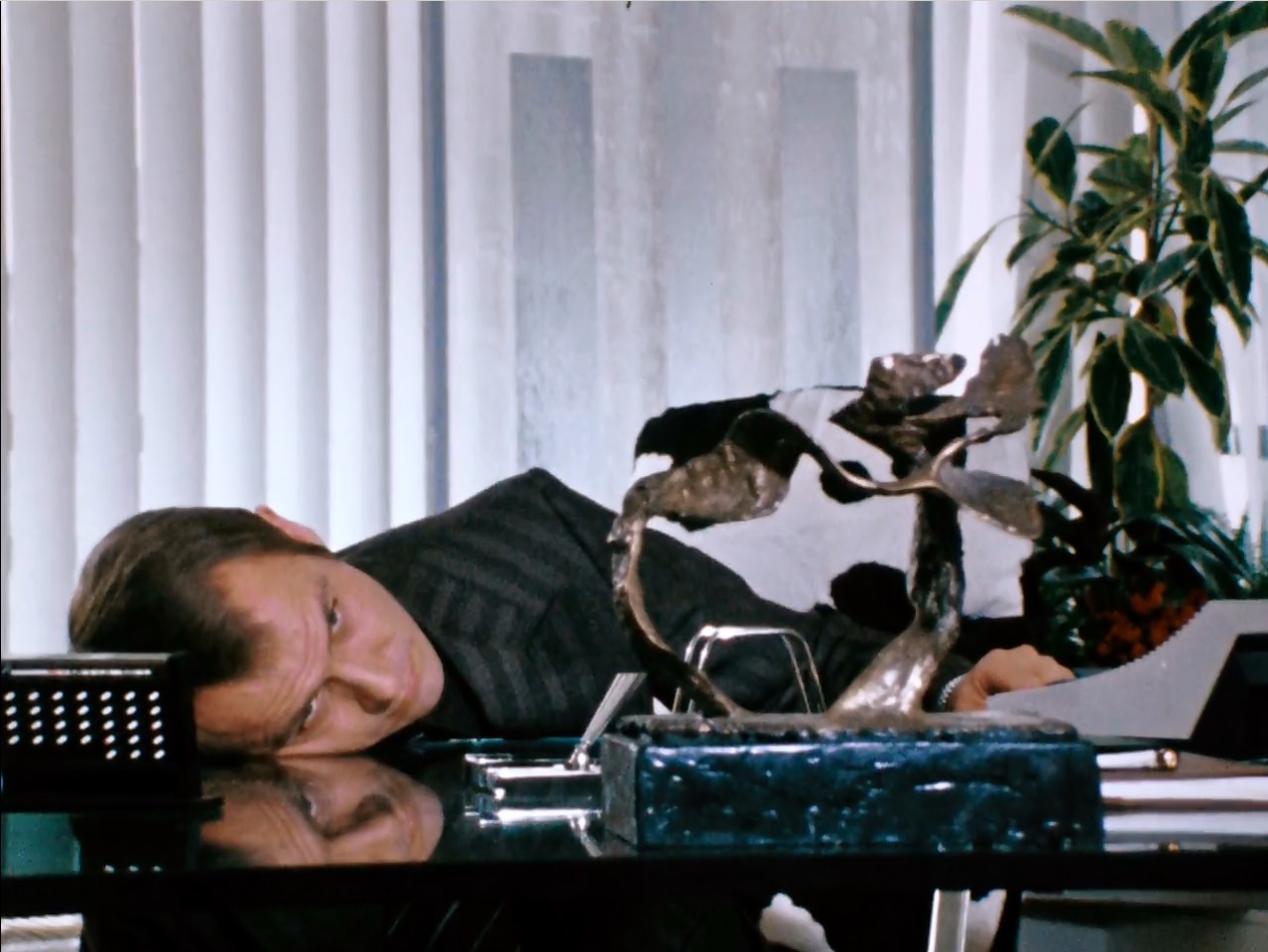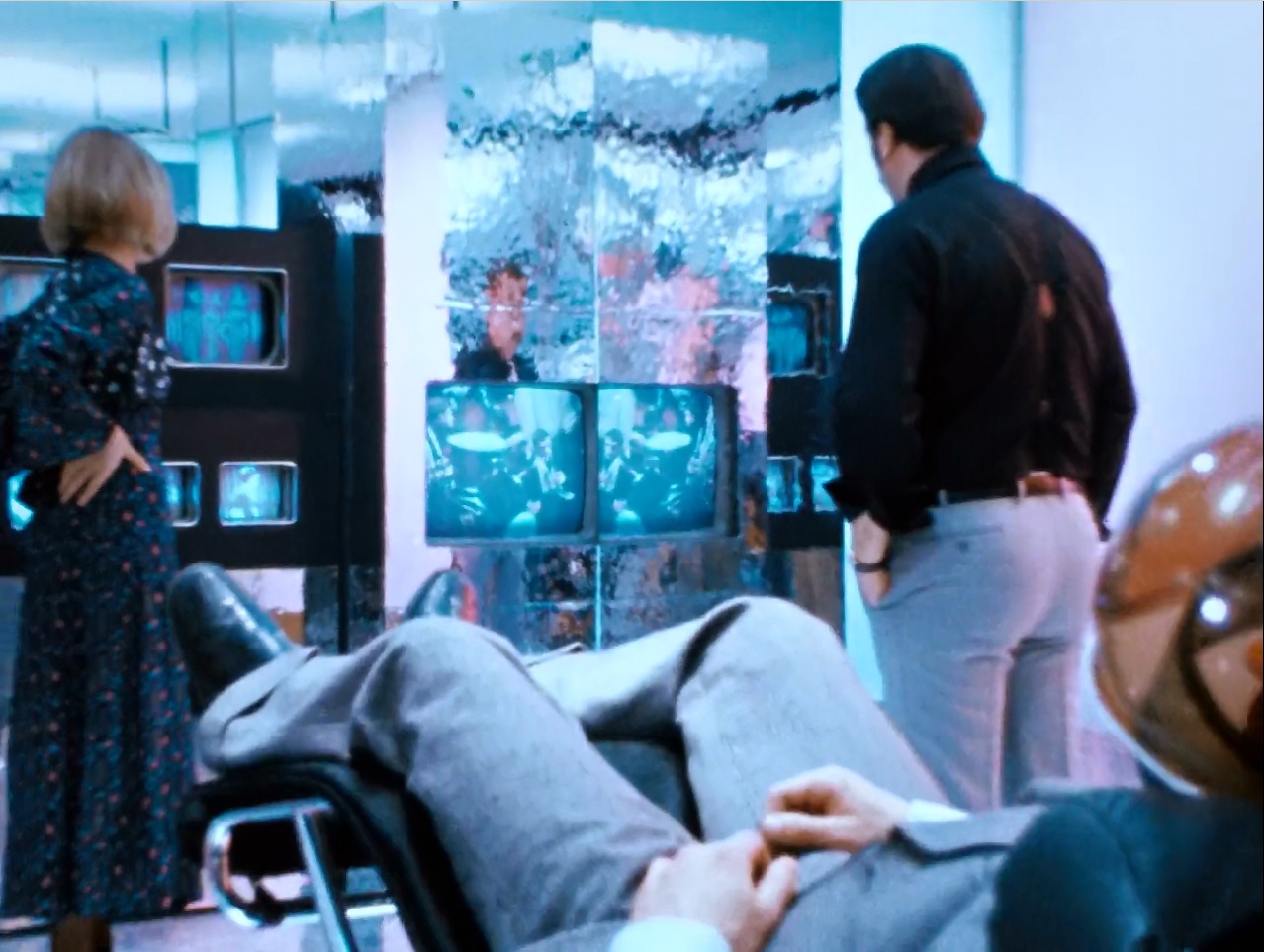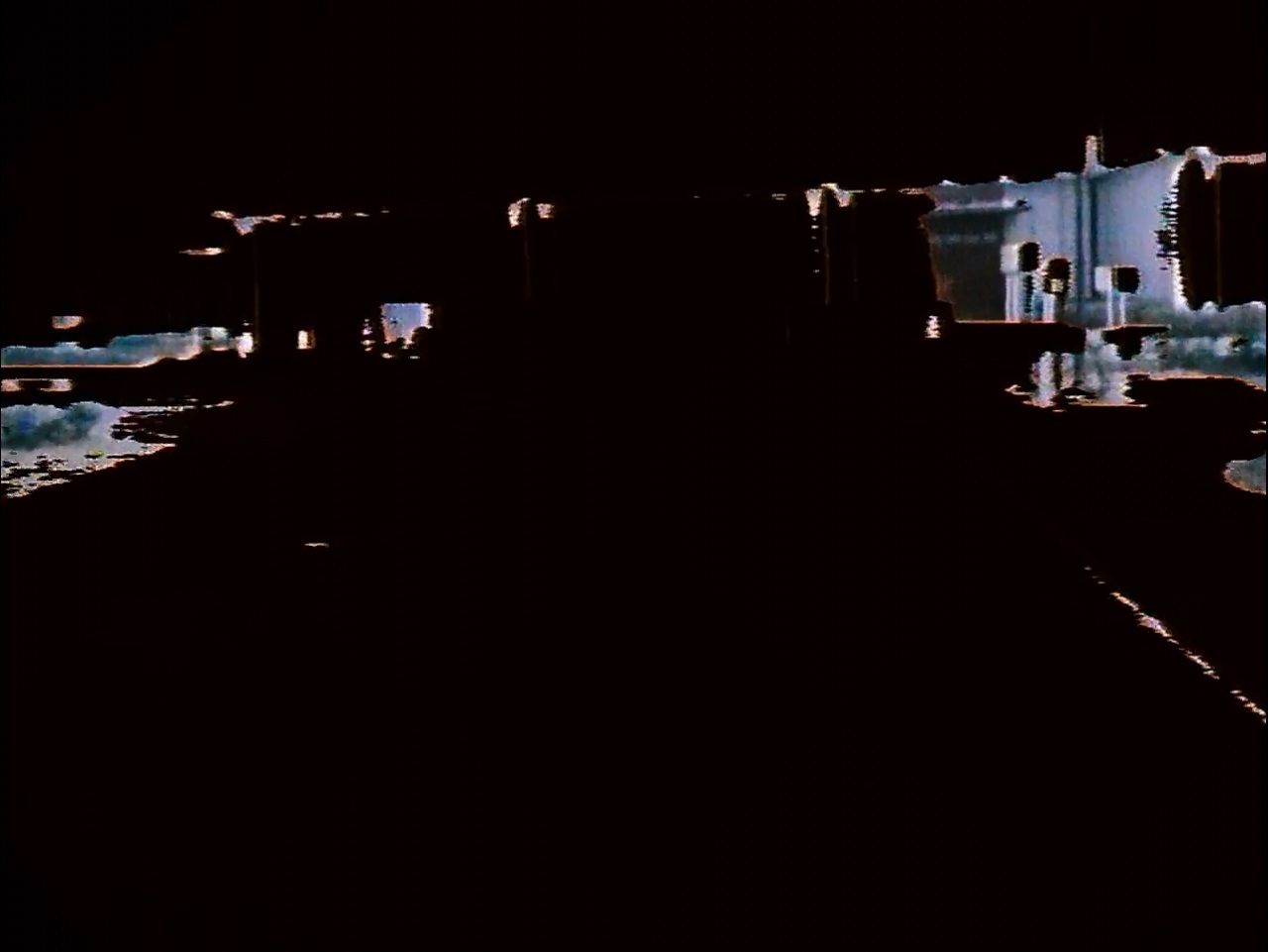Enjoy this aerial shot of London as you start split Second (1992), as it’s about the last recognisable shot of the city.
And there we have the setting for this movie: London 2008, a city plagued by global warming and decades of pollution, which in practise means most of the sets are covered in scummy water and everything is fogged up. None of this setup actually matters to the plot and there isn’t any real reason this was set in the future. This is the least science fictional science fiction movie ever. Instead this is a combination of a serial killer movie and a buddy cop movie, just gussied up with a few sfnal props and weapons. Apart from the climax of the movie being set in a flooded Underground, there’s no real reason that this movie takes place in London either. In fact, most of the movies takes place on sets that could’ve just as well be used for some random American city.
Rutger Hauer isn’t necessarily the most subtle of actors even in the best of times, but I’ve never seen him chew the scenery as enthusiastically as he does here. Hauer started his career as a teenage heart throb in a medieval adventure series in the Netherland, before starring in several Dutch cult classics like Turks Fruit and Soldaat van Oranje. When the director of these movies, Paul Verhoeven, moved to Hollywood Hauer followed him. You know him of course as Roy Batty in Blade Runner, but perhaps also as the villain in The Hitcher, or from Flesh + Blood or Ladyhawke. His movies aren’t always classics, but they’re always entertaining. In Split Second he’s Harley Stone, a hard bitten cop who lost his partner to a serial killer three years ago. Now the killer is back and Hauer is on his tracks. the stereotypical loner cop, Hauer listens to nobody and doesn’t let anything or anyone stop him from pursuing the killer. Why he has to do all that in an American accent when the movie’s set in London is never explained.
Meanwhile almost every other actor in the movie is somebody who you’d probably remember from having guest starred on Coronation Street or from having had a critically acclaimed role in some worthy BBC drama. Here we have Alun Armstrong as the police chief Trasher spouting the usual cop movie cliches to Neil Duncan, the soon to be new partner to Rutger Hauer. Both of these weren’t new to playing cops, Armstrong having been in The Sweeney and Duncan in Taggart, but here they are in what is clearly an American cop flick, somewhat out of place. Duncan especially, though he’s well suited for playing the book smart, sensitive, health conscious rookie that will get on surprisingly well with Hauer’s paranoid veteran surviving on “anxiety, coffee and chocolate”.
That mixture of American cop cliches and British actors makes for a strange movie. It actually took me until this scene, some forty minutes into its one and a half hour run time that Split Second clicked for me. Once again a familiar scene. Hauer takes Durban to his favourite bar with Durban having won a little bit of his trust. As Hauer munches down on a full English and Durban asks for a fancy tea and a crossaint, they share theories on the serial killer. Meanwhile, in Hauer’s flat, his murdered partner’s ex-girlfriend is having a shower; cue the Psycho music. Cue also a quick glimpse of Kim Cattrall’s breasts, because of course. All this is played completely straight, but the absurdity of this sort of cop movie cliche playing out against a background track of the Moody Blues’ Nights in White Satin makes it all slightly absurd. And you can’t tell me this wasn’t intentional.
Because even in 1992 everything in this movie was cliched and hackneyed, yet you have a cast of serious character actors who all deliver their absurd lines with complete earnestness. Granted, this could all be a case of “I haven’t seen the movie, but I have seen the house the movie bought”, but I doubt it. This feels more like a cast having fun with something they know on its own is bad, but by taking it ultra serious, can be made into something hilarious. And that’s the charm of this movie, even if it was done by accident. Having Hauer and Durban act the shit out of their roles in their own way is what makes this movie for me. Don’t watch it for the plot, or for the science fiction, such as it is. Watch it for actors having fun. Nothing in this movie really makes sense, but you’ll enjoy it nonetheless.
